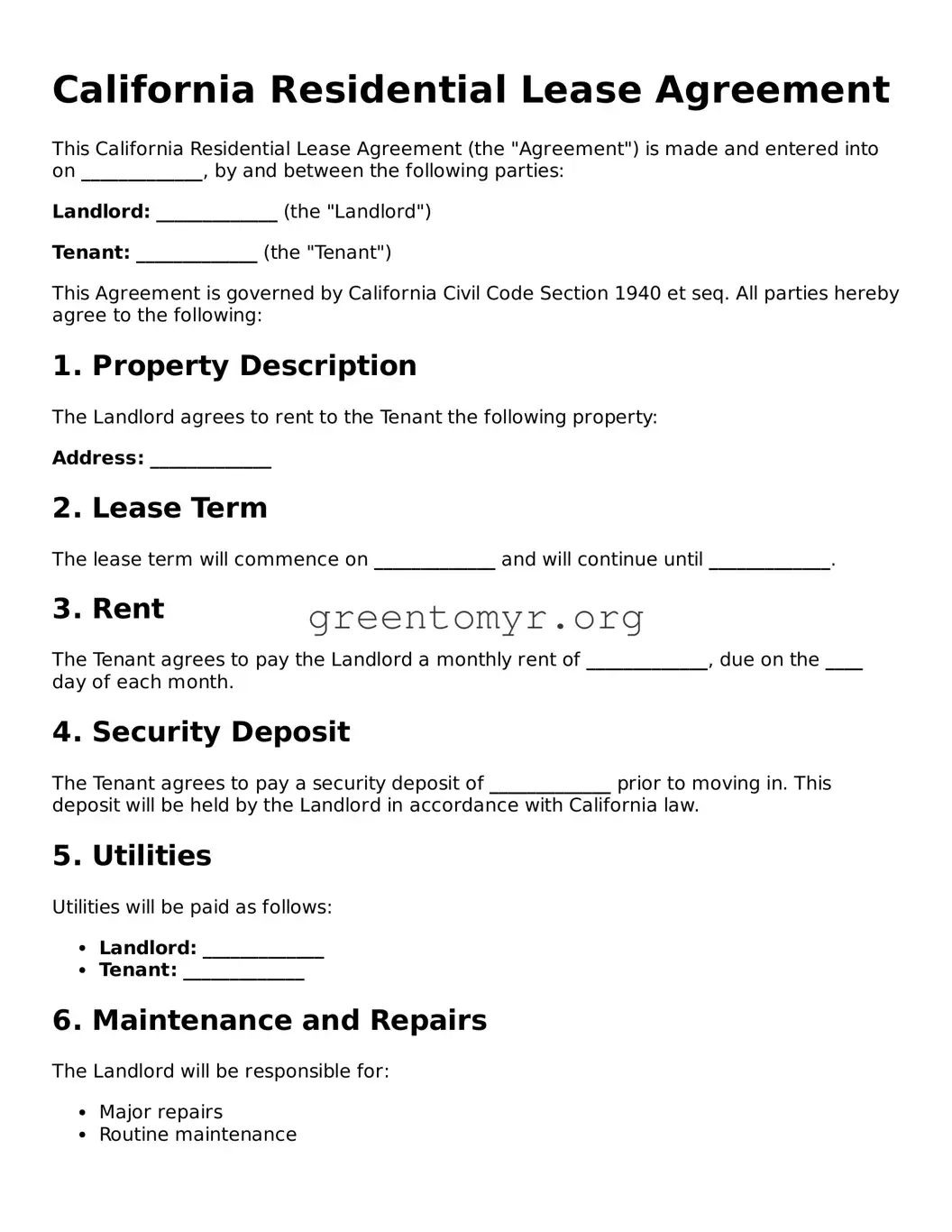California Residential Lease Agreement
This California Residential Lease Agreement (the "Agreement") is made and entered into on _____________, by and between the following parties:
Landlord: _____________ (the "Landlord")
Tenant: _____________ (the "Tenant")
This Agreement is governed by California Civil Code Section 1940 et seq. All parties hereby agree to the following:
1. Property Description
The Landlord agrees to rent to the Tenant the following property:
Address: _____________
2. Lease Term
The lease term will commence on _____________ and will continue until _____________.
3. Rent
The Tenant agrees to pay the Landlord a monthly rent of _____________, due on the ____ day of each month.
4. Security Deposit
The Tenant agrees to pay a security deposit of _____________ prior to moving in. This deposit will be held by the Landlord in accordance with California law.
5. Utilities
Utilities will be paid as follows:
- Landlord: _____________
- Tenant: _____________
6. Maintenance and Repairs
The Landlord will be responsible for:
- Major repairs
- Routine maintenance
The Tenant is responsible for keeping the premises clean and reporting any issues promptly.
7. Termination
Upon termination of this Agreement, the Tenant agrees to vacate the property by _____________.
8. Governing Law
This Agreement shall be governed by the laws of the State of California.
9. Signatures
By signing below, both parties agree to the terms and conditions of this lease.
Landlord Signature: _______________________ Date: _______________
Tenant Signature: _______________________ Date: _______________
